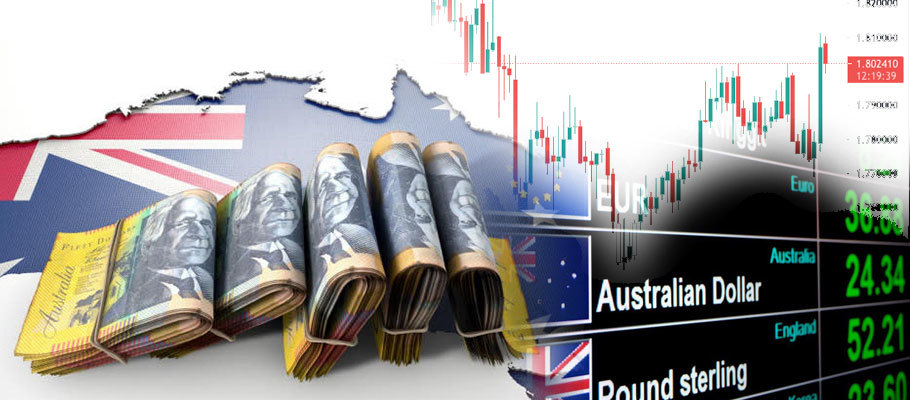
Published: June 12th, 2021
Australia's moribund COVID vaccination programme is making the country’s currency vulnerable to reduced economic growth.
New research from Crédit Agricole says that AUD is now underperforming on global forex markets relative to where the fundamentals say it should be. A statement accompanying the research said low vaccination rates in Australia are part of the perceived undervaluation in major pairs like AUD/USD.
Cyclical currencies are all profiting from the global economy’s overall restart and the resumption of near-normal levels in international trade, the bank says. But some currencies are doing better than others thanks to factors like relative differences in commodity export prices, monetary policy, trading partner growth, and crucially, vaccination rollout progress.
The perception that Australia's slackening pace for vaccinations is being seized on by many analysts. Australian bank Westpac has also suggested that AUD’s relative under-performance is linked to vaccination rates.
‘The aussie being restrained by Australia’s low COVID-19 vaccination rate and worries about an uptick in new cases in Asia,’ Westpac’s FX strategy unit told investors this week. ‘The Euro now looks more promising s an alternative major’.
Vaccinations have been a defining theme this year as countries rush to inoculate their populations in hopes of unlocking their economies and returning to relative stability. Sterling was one of the early winners in Q1 as the country was fast out of the gate with its vaccination programme. Analysts say COVID-19 is still a factor for countries seen to be lagging behind.
It's not just Down Under where slow vaccination rates are pulling currency valuations southward. Canada’s vaccination rate has fallen behind America's, and that has affected the USD/CAD rate. The slower vaccination rate in non-Euro Scandinavian countries is also weighing on their currencies relative to the Eurozone.
To achieve vaccine-driven herd immunity, medical experts say every country must inoculate a sizeable proportion of their population. The threshold for herd immunity gets higher, however, with each new virulent strain of COVID-19, something countries like the UK are discovering with the so-called Indian variant of coronavirus.
Australia and New Zealand are both looking at new cycles of commercial lockdown in the future as they sustain policies of 'zero tolerance’ for covid, aiming for the complete elimination of the virus rather than just managing its impacts.
On that basis, the longer it takes Australia to roll out vaccinations, the longer it will be before the economy returns to normal (full) capacity.
That will require a re-opening of the island nation’s borders. Until then, the Reserve Bank of Australia (RBA) is expected to carry on with its soft approach to interest rates.
AUD’s failure to launch in tandem with surging commodity prices has been one of the more notable stories in currency markets this month. Low interest rates on offer from the RBA are also contributing to the undervaluation dynamic.
With Australia’s economy is currently running below its potential thanks to the ongoing global health crisis, analysts believe RBA interest rates will probably hover close to their current record low levels until mid-2023. Along with Sweden’s Riksbank, the RBA is widely seen to be one of the least hawkish central banks amongst the G10. That’s also helping to keep AUD (and SEK) in the underperformer category.
On a sunnier note, however, analysts at Australia’s ANZ Bank told Bloomberg this week that the RBA is expected to announce a 'soft taper' to the quantitative easing programme at its July meeting, a vital first step on the path to lifting interest rates.
I that shift occurs, it would be significant for the RBA and possibly change its dovish perceptions.
That would mark a supportive development for traders whose strategies depend on a strengthening Australian dollar.
The Reserve Bank of Australia may yet become a source of support for the aussie if it does reveal plans for a 'soft taper' to quantitative easing at its July policy meeting.
Monetary policy analysts at ANZ Bank believe the RBA is being forced by circumstances to make a material change to its QE programme this Summer, and the decision it takes will have a substantial impact on valuations for AUD.
‘We now believe the RBA will move to a ‘flexible QE’ footing in July. That would mean weekly starts in the amount of ca. AUD5bn with a review expected before calendar year-end' said the bank.
Markets will inevitably view this change as a soft taper and a significant first major step on what policymaker’s and traders alike hope will be a resumption of stability and more predictable economic cycles.
A taper would mean a gradual shut down of the central bank’s quantitative easing (QE) programme. The mechanism would be a reduction in the volume of assets the RBA purchases under the programme and open the door to interest rate rises later.
If the RBA starts that journey as expected, it will give upside support to AUD.
In February, the bank said it would pump an additional AUD 100BN into the economy through the QE programme before September. With three months left before the package is exhausted, the RBA will need to make another decision.
Market watchers think another tranche of AUD 100BN is unlikely given the growing confidence in Australia’s general outlook.
But simply winding down the QE programme would also alarm markets and trigger a sudden sharp ramp-up in AUD’s value. On the other hand, AUD could also see gains if the RBA expands the quantitative easing programme at a reduced monthly rate, sometimes called an ‘explicit’ taper.
The Bank of Canada tried a similar move in April when it announced a reduction in weekly asset buys under its own extended quantitative easing programme, pulling back from CDN 4BN to CDN 3BN.